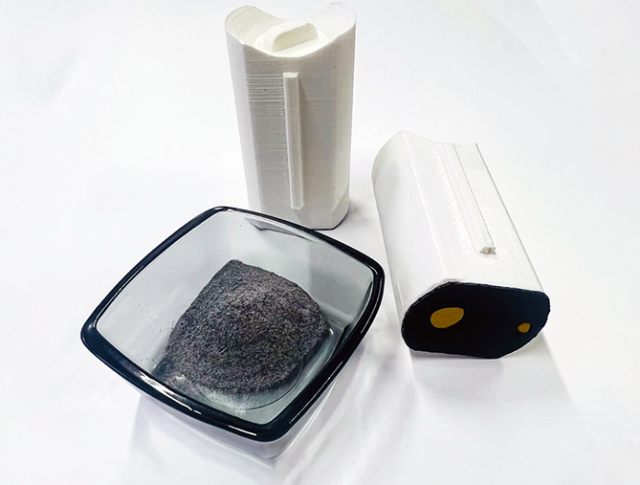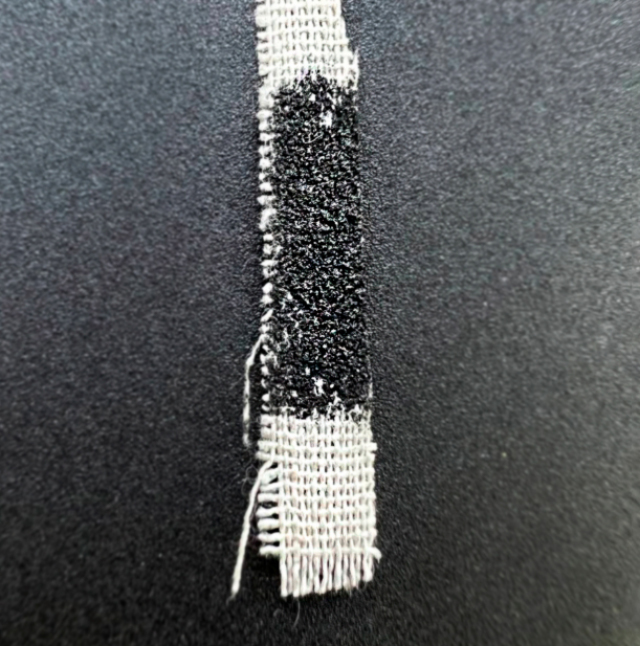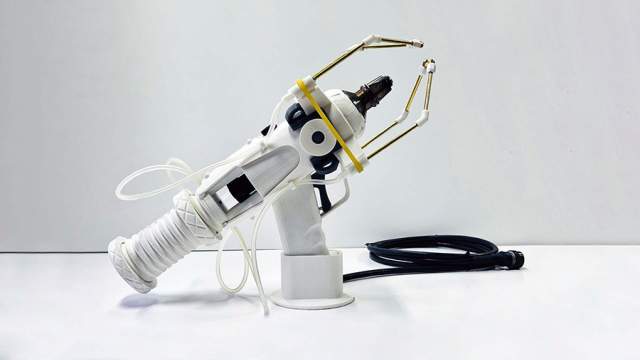How textile devices will be useful in the fields of transport, medicine and fire safety
Russian specialists have created conductive coatings for application to textile materials. They will allow you to create electronic devices on a fabric basis. Such gadgets can be integrated into a jacket, backpack, tent and other products. The devices will measure temperature, adjust climate control, and create protection to reflect radio waves and electromagnetic fields. Unlike foreign analogues, domestic development does not require laying wires inside the fabric. According to scientists, the device is already designed and ready for mass production. However, experts note that it will take at least two years to introduce the technology into the industry.
Electrical wiring on fabric
Scientists from the Kosygin Russian State University (RSU) have developed a technology that can become the basis for creating textile-based electronic devices. Including smart clothes, touch fabrics, protective screens and much more.
The technology allows to apply film coatings of various thicknesses, with different number of layers and a variety of modifying additives to textiles. The variety of options makes it possible to obtain materials with programmable properties. The main component of coatings is carbon nanotubes. These are long cylindrical molecules made of carbon atoms, which are considered the most durable material on Earth. They pass current and heat through themselves well.

Image source: Photo: Press Service of the Kosygin Russian State University
By acting on nanocompositions with streams of "cold" plasma, scientists have obtained materials resistant to mechanical influences, ironing with an iron and washing.
— Due to the high electrical conductivity, the invention can be in demand in a wide variety of fields. One of the interesting directions is the application of electrical circuits to the fabric and the introduction of electronic components into its structure. In the end, it is possible to create microcomputers on a textile basis, — the author of the development, lecturer of the department of "Technology of Artistic Processing of Materials" of the Institute of Mechatronics and Robotics of the Russian State University Mark Fedorov told Izvestia.
The scientist stressed that by changing the components of the initial powders and the application modes, it is possible to obtain coatings with different properties. For example, by increasing the resistance, it is possible to achieve heating of the material during the passage of an eclectic current. So, it can be used to create thermal clothing and shoes.

Image source: Photo: Press Service of the Kosygin Russian State University
Another example is sensory coatings that will detect micro—movements and measure pulse, breathing depth, muscle activity and other parameters. They will become assistants in monitoring the state of human health. Sensor materials in furniture paneling, curtains, drapes and other finishing materials will warn about fires and other emergency situations.
In transport, smart fabrics as seat covers can react to the presence of passengers and initiate comfort modes — change the temperature and humidity in the cabin.
— One of the important directions is the use of smart fabrics in the military sphere. For example, you can create protection against radio frequency radiation and electromagnetic fields. Such shielding coatings can protect the headquarters or disguise military equipment," said Mark Fedorov.

Photo: RIA Novosti
Image source: iz.ru
He also noted the scope for sensor coatings in the VR industry. In particular, smart material applied to clothing will be able to transmit virtual effects to the human body, enhancing the realism of the game. In robotics, such an effect will help the operator controlling the manipulator to "feel" the efforts that a mechanical hand makes to grab an object.
"Fire" water
In addition to powders, the scientist developed a device for coating textile surfaces. This is a portable device that generates "cold" plasma — partially ionized incandescent gas.
— When leaving the device, the plasma temperature is 8000 °C, but by the time of interaction with the nanocomposite (3 cm from the nozzle), it cools down to 300-400 °C. In this area, the powder melts and settles on the fabric in liquid form. Its temperature at the moment of touching the fabric is 180-200 ° C. Therefore, the fabric does not burn and does not melt," said Mark Fedorov.
The inventor explained that the advantage of the method is that the device is compact and able to work in the field. They can even handle things without removing them from a person.
At the same time, unlike foreign analogues, the development does not require laying wires inside the material. At the same time, the technology allows you to apply coatings with both a wide line and a thread-like strip. This also creates a great variety for the application.

A sample of one hundred percent cotton fabric with a multifunctional coating applied
Image source: Photo: Press Service of the Kosygin Russian State University
The scientist noted that the device has already been designed and is ready for mass implementation. In particular, the product provides replaceable blocks for powder compositions, which, like cartridges, are replaced as they are consumed.
The world of the future
Experts have confirmed that there are no analogues of the technology now either in Russia or in the world.
— The patent analysis showed the purity of the invention, — an associate professor of the Higher School of Service of the Russian State University of Tourism and Service (RGUTiS) told Izvestia Vyacheslav Ivanov.
The expert noted that there are four known methods of applying carbon nanotubes. These are chemical deposition, electrofilter coating, paste application and plasma coating in vacuum chambers. At the same time, the technology proposed by Mark Fedorov is simple, does not require expensive equipment and provides a high-quality result, steadily fixing the coating on the fabric. It is applied evenly and with a given density.
According to Vyacheslav Ivanov, industrial enterprises need ready-made solutions to implement the technology. Their preparation will take at least two years. Nevertheless, after the author receives the patent, a pilot production of innovative products based on the development will be launched at RGUTiS.
— Scientists of Kosyginsky University have created a huge reserve. Their invention can change our understanding of the properties of many things and bring the world of the future closer to us," said Yulia Boyko, associate professor of Computer Design at the Russian Technological University.

Incision of a sample of 100% cotton fabric with a multifunctional coating applied, magnified under a microscope
Image source: Photo: Press Service of the Kosygin Russian State University
She believes that it is possible to visualize a huge number of possible applications. For example, technologies for managing the properties of clothing or creating textile-based displays.
Currently, inventors continue to experiment with the compositions of nanocompositions and study the properties of coatings obtained under different application modes.
Andrey Korshunov

